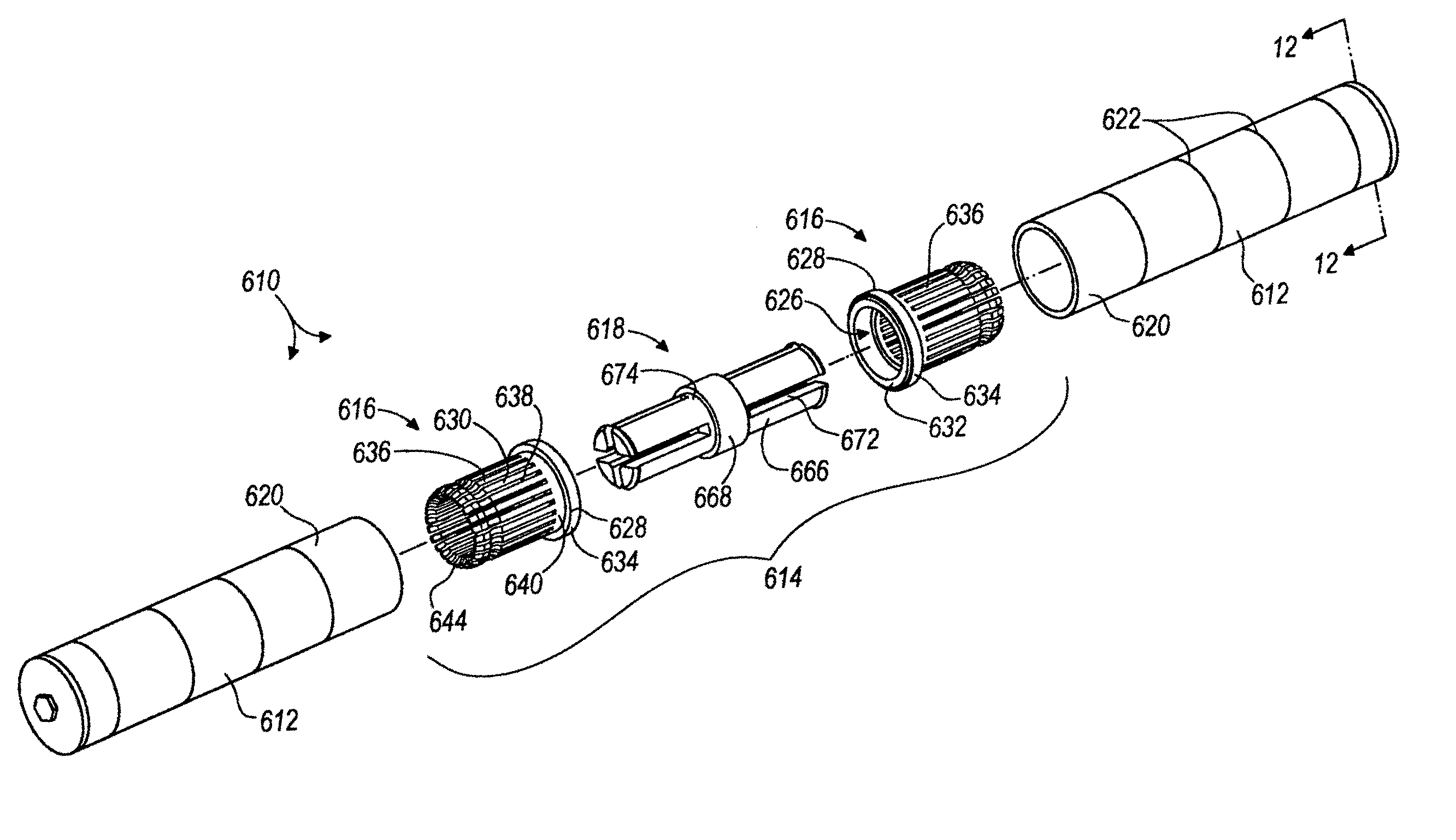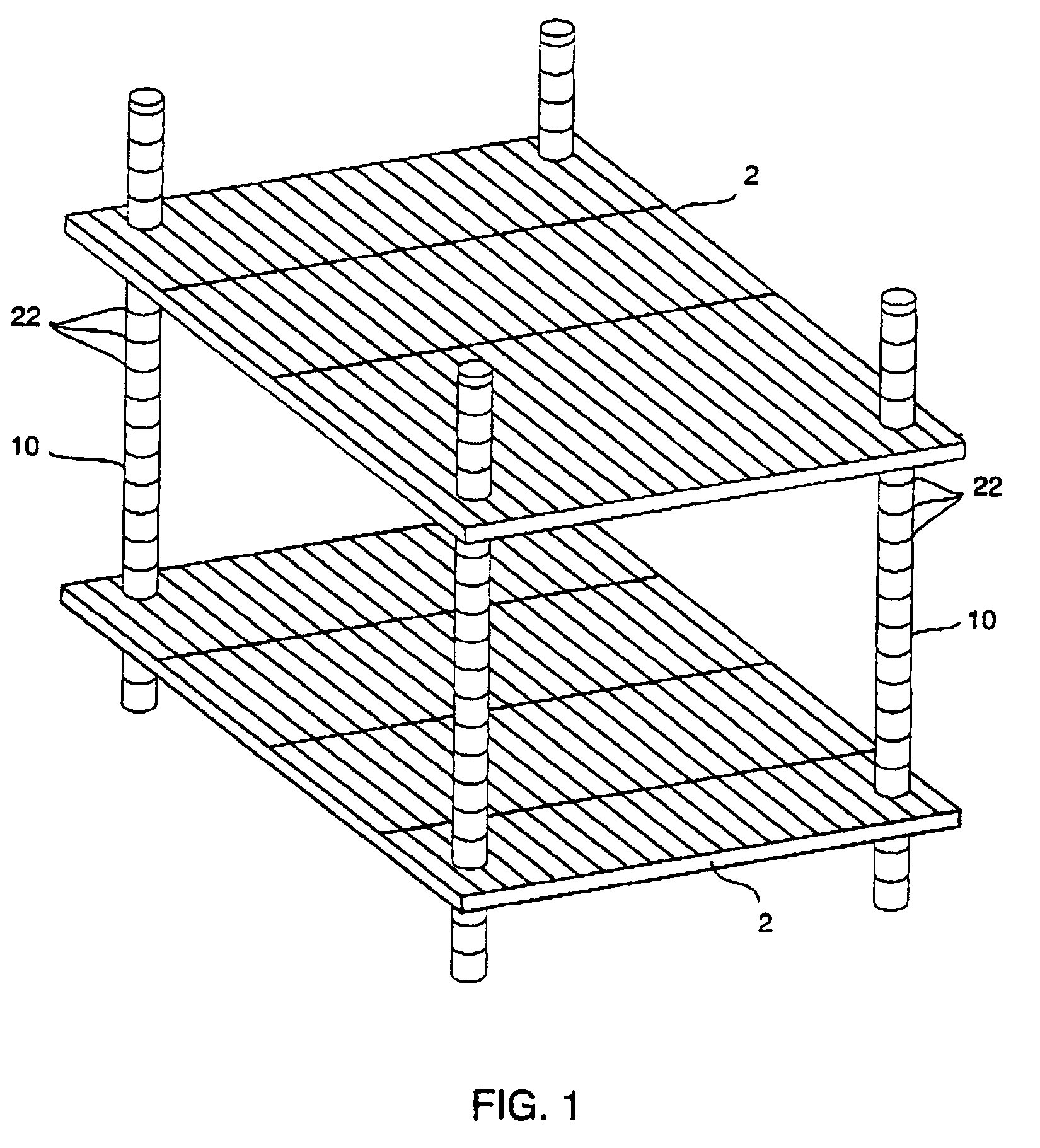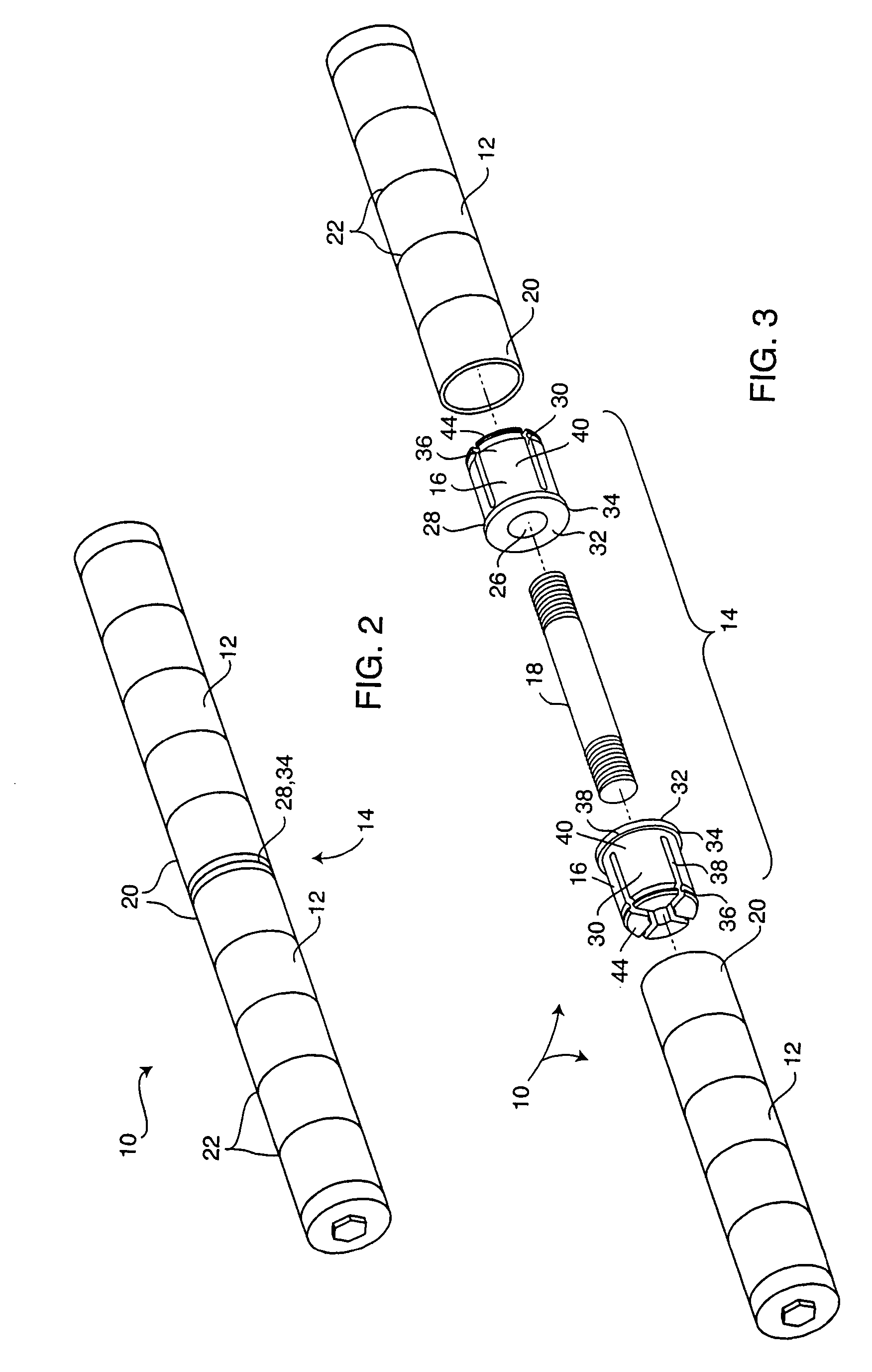Pole connector assembly and method for racks and shelving
a technology of pole connectors and assemblies, applied in the direction of rod connections, filing appliances, couplings, etc., can solve the problems of unreliable conventional pole connector devices and assemblies, lack of one or more aspects of pole connector devices, slow assembly and disassembly, etc., to achieve reliable and strong pole connection, simple and inexpensive manufacturing, and additional stability
- Summary
- Abstract
- Description
- Claims
- Application Information
AI Technical Summary
Benefits of technology
Problems solved by technology
Method used
Image
Examples
Embodiment Construction
[0034]The present invention is described in terms of its application to poles for adjustable and non-adjustable shelves and racks such as that shown in FIG. 1. An example of such a shelf assembly is disclosed in U.S. Pat. No. 4,852,501 issued to Olson et al., the disclosure of which is incorporated herein by reference insofar as it relates to shelf assemblies and adjustable shelf assemblies. However, the present invention can be employed in any application in which two pole sections must be connected in an end-to-end fashion.
[0035]FIGS. 2 and 3 illustrate a pole according to one preferred embodiment of the present invention. The pole 10 has at least two pole sections 12 connected in end-to-end fashion as will be described in greater detail below. Although the pole 10 in FIGS. 2 and 3 has only two pole sections 12, it should be noted that a pole 10 having any number of pole sections 12 and pole section lengths is possible according to the present invention.
[0036]FIGS. 3 and 5 illustr...
PUM
 Login to View More
Login to View More Abstract
Description
Claims
Application Information
 Login to View More
Login to View More - R&D
- Intellectual Property
- Life Sciences
- Materials
- Tech Scout
- Unparalleled Data Quality
- Higher Quality Content
- 60% Fewer Hallucinations
Browse by: Latest US Patents, China's latest patents, Technical Efficacy Thesaurus, Application Domain, Technology Topic, Popular Technical Reports.
© 2025 PatSnap. All rights reserved.Legal|Privacy policy|Modern Slavery Act Transparency Statement|Sitemap|About US| Contact US: help@patsnap.com



